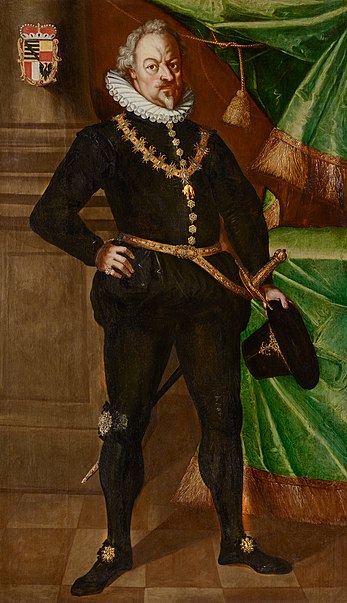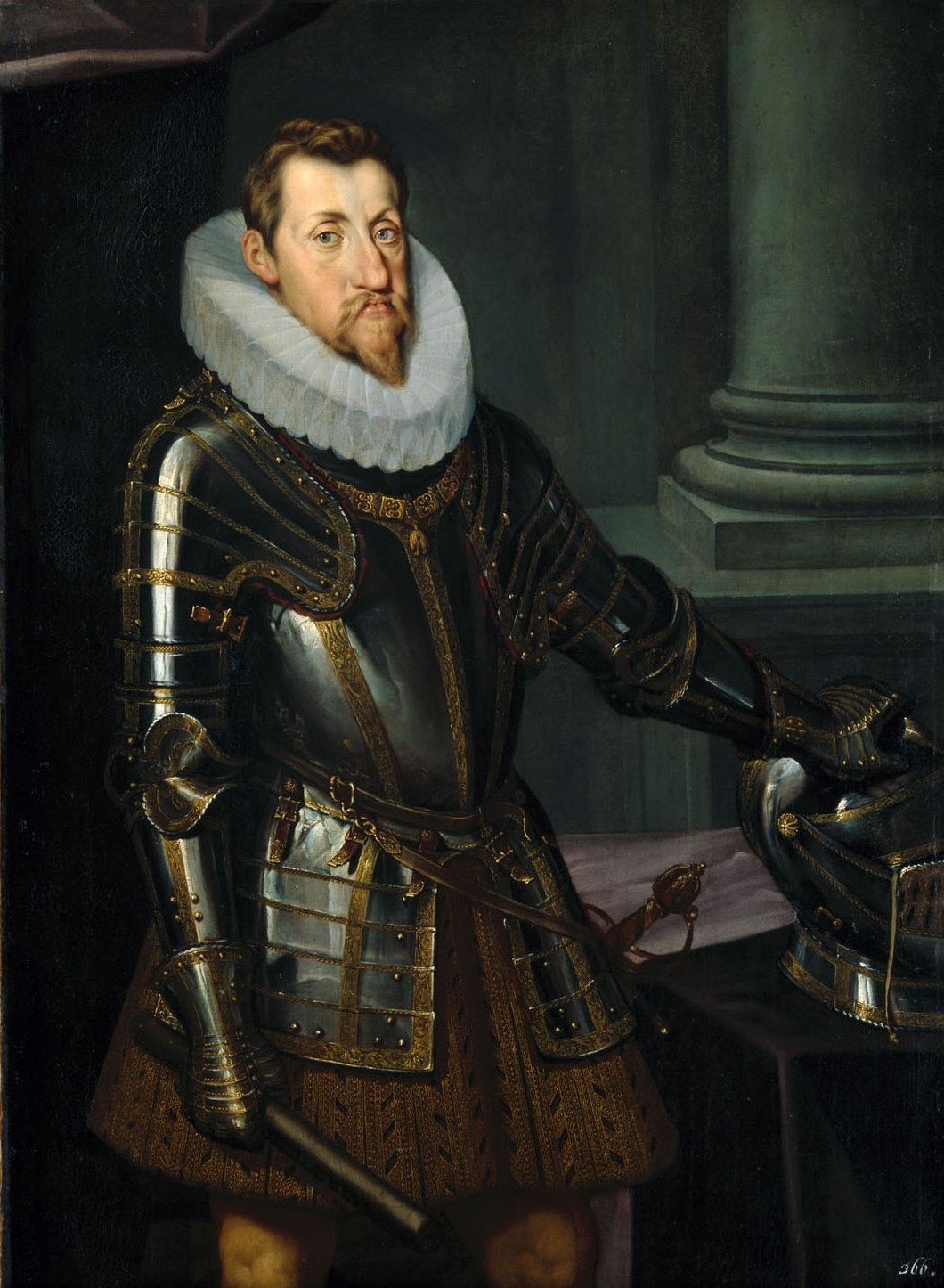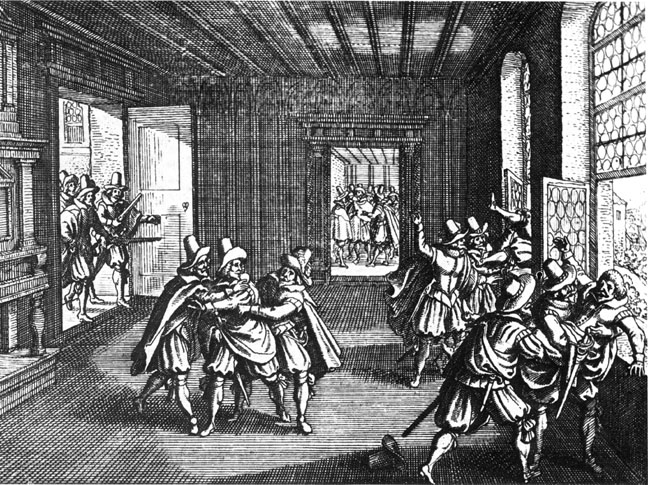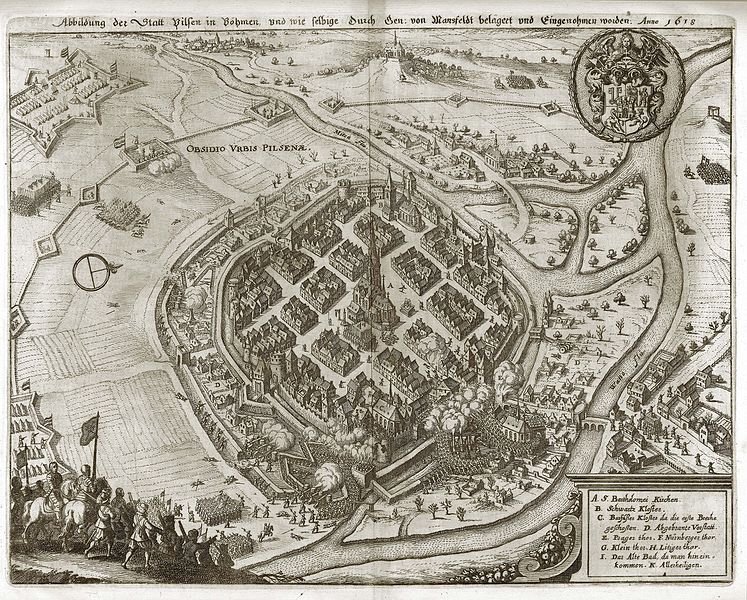 |
| Battle of Stadtholn |
The War Rages On
On 6th
August 1623 the imperial forces, led by Tilly, fought their way to a
magnificent victory at Stadtholn in Westphalia. The Protestant forces led by
Christian of Brunswick were overwhelmed and, although Christian and 1,000
cavalry escaped[i],
many of his senior officers were killed. Frederick was forced to sign an
armistice with Ferdinand.
Meanwhile
Elizabeth’s brother Charles and his good friend George Villiers were
scandalising the Spanish court, while spying out the land; Charles was
interested in marrying one of the Infantas of Spain. James believed that an
alliance with Spain would be the way to keep England out of the war. His
daughter did not view the proposal with equanimity;
‘I have cause enough to be
sad yett I am still of my wild humour, to be as merrie as I can in spite of
fortune. I can send you no news but that which will make you sadder………..All
growes worse and worse………..my brother is still in Spaine.’[ii]
In 1624
Denmark entered the war and in the same year, egged on by his favourite George Villiers and his son, James sent troops to
support the Protestant cause.
Births and Deaths
 |
| Frederick Henry of the Palatinate |
On 21st
August 1624 Elizabeth gave birth to Louis, who died aged five months. Seven
months later Elizabeth’s father James died on 27th March 1625 and
was succeeded by Charles, a man decidedly unfit for purpose and, like his
father in his dotage, ruled by Villiers.
On 5th October 1625 Edward, Count Palatine of Simmern[iii] was born. And in the same year that Sweden entered
the war, under the leadership of Elizabeth’s former suitor Gustavus Adolphus,
on 7th July 1626 Henriette Marie of the Palatinate[iv] was born. The following year on 26th
September Elizabeth bore John Philip Frederick of the Palatinate.
In 1628 Catholic France, directed
by Cardinal Richelieu, entered the war on the Protestant side[v]
At the end of the year, on 19th December 1628, Charlotte of the Palatinate was born[vi].
Less
than a month later, Elizabeth and Frederick’s eldest child Henry Frederick
drowned, age 15 on a visit to the Haarlemmeer to see a captured Spanish treasure
fleet.
 |
| Charles Louis and Rupert |
The tragedy
resulted in Frederick leaving all political matters in Elizabeth’s hands and
she relied on her brother who recommended taking up Ferdinand on his offer of
having Charles Louis brought up as a Catholic in Vienna. Elizabeth was
incensed;
‘Rather than stoop to such
an act of meanness she would with her own hands become her son’s executioner.’[vii]
Elizabeth’s
penultimate child was to have significant effect on English history. Sophia, the future Electress of Hanover, was born on 14th
October 1630[viii].
In that year Saxony and Brandenburg finally took up arms for the Protestant
cause. Frederick and Elizabeth’s final child was Gustavus Adolphus born on 14th
January 1632 and named after the Swedish king at Elizabeth’s request; Frederick
had wanted to name him after their lost first born.
 |
| Frederick |
Frederick died
on 29th November 1632, 23 days after the death of Gustavus Adolphus
of Sweden; Elizabeth was to outlive her husband by thirty years. Frederick had
hidden the gravity of his ailments and the news of his death was a shock to
Elizabeth, she wrote to the States of Holland;
‘To lose him renders my
grief almost beyond endurance. My first great resource is Heaven: next to that
divine trust, I confide in you; nor will I doubt but that to me and my
children, will be continued that friendship so long manifested to my lamented
consort. It is for a widow, for her orphans, that I now implore your
protection.’[ix]
Elizabeth
spent her widowhood in den Haag writing copious numbers of letters and attempting
to make marriage matches for her children, while the war continued to rage around
her.
Peace in Our Time
 |
| Gustavus Adolphus with his mother or elder sister |
The young Gustavus
Adolphus died on 9th January 1641; in the same month that the Diet
of Regensburg, summonsed by Ferdinand, offered Elizabeth and her daughters a
safe conduct should they wish to claim the pensions and dowries suitable for the
widow and children of a German prince. The safe conduct was not offered to her
sons, one of whom was fighting in the Dutch army, one in the Swedish army and another
was a prisoner of Ferdinand’s and never ceased informing his jailers of the
righteousness of his father’s cause.
Charles
Louis and Rupert spent time in England attempting to gain Charles’ support for
their cause. Indeed Rupert commanded Charles’ cavalry and was in charge of Bristol during the 1645 siege. Rupert was castigated by Charles
when he surrendered the city to save his men. Egged on by a jealous royal
favourite, the George Digby the Earl of Bristol, Charles ordered
that his ablest commander was to no longer fight for the royalist cause. This
was not the only foolish advice tendered by Digby who persuaded Charles on the
course that was to end on the scaffold for Charles and exile for Digby.
.jpg/785px-The_Ratification_of_the_Treaty_of_Munster%2C_Gerard_Ter_Borch_(1648).jpg) |
| Ratification of the Treaty of Munster |
Peace in
Europe was not reached until 1648 when the Peace of Westphalia[x] was finally concluded with a series
of Treaties signed at Münster and Osnabrück. The peace saw Charles Louis restored to his rightful position as Prince
of the Lower Palatinate and as an Elector; the Upper Palatinate being attached
to Bavaria.
Death in Winter
The deaths
of Gustavus, John Philip in 1650, Henriette Marie in 1651 and Maurice in 1652
must have caused Elizabeth much grief. Elizabeth would have also suffered when
her baby brother Charles was executed, due to his own folly, in early 1649. Charles’
family spent time in the Netherlands and at the court of Louis XIV during the years of the Commonwealth.
 |
| Elizabeth as a widow |
Elizabeth
became estranged from her remaining children, although she did spend time with
her growing number of grandchildren. She was now to pay the price for being
"a distant mother to most of her own children".
In May 1660
Elizabeth’s nephew Charles
II was restored to
the English throne; the English fleet came to collect their king from den Haag.
A young Pepys was in the king’s entourage and he was allowed the honour of
visiting the king’s aunt;
‘After that, to see the
Queen of Bohemia, who used us very respectfully. Her hand we all kissed.’[xi]
Elizabeth decided
to return home and arrived in England on 26 May 1661. The delay was caused by
Charles’ ministers who intimated that a visit from the king’s aunt would be
best delayed. Elizabeth wrote to the Chancellor;
_1st_Duke_of_Cumberland_and_Count_Palatine_of_the_Rhine.jpg) |
| Prince Rupert |
‘Having taken leave of her
friends, she could not go back to it without incurring disgrace.’[xii]
By July, she
had decided to stay and arranged for the remainder of her furniture, clothing
and other property to be sent to her.
Elizabeth
moved into Drury House in London. In the new year, on 29
January 1662, she moved to Leicester House; but by this time she was ill,
suffering from pneumonia. On 10 February 1662 Elizabeth had a
lung hemorrhage, dying soon after midnight on 13 February 1662; appropriate
timing for the Winter Queen. She was buried in Westminster Abbey close to her brother Henry, with only Rupert walking
behind his mother’s coffin.
Bibliography
Gustavus
Adolphus the Great – Nils Ahnlund, 1999 History Book Club
Memoirs of
Elizabeth Stuart, vol 2 – Elizabeth Benger (ed), General Books LLC 2012
The Early
Stuarts – Godfrey Davies, Oxford University Press 1987
King James –
Antonia Fraser, BCA 1974
Charles I –
Christopher Hibbert, Penguin 1968
The Thirty
Years War – Herbert Langer, Dorset Press 1990
The Shorter
Pepys – Samuel Pepys – Penguin Books 1987
The Thirty
Years War – CV Wedgewood, Folio Society 1999
www.wikipedia.en
[i]
This was Christian’s last serious engagement and he died three years later in
1626 at the age of 26
[ii]
Memoirs of Elizabeth Stuart, vol 2 – Benger (ed)
[v]
France was concerned about the incipient Hapsburg hegemony in Europe
[vi]
She died just over two years later
[vii]
Memoirs of Elizabeth Stuart, vol 2 – Benger (ed)
[ix]
Memoirs of Elizabeth Stuart, vol 2 – Benger (ed)
[x]
France and Spain remained at war for another eleven years
[xi]
The Shorter Pepys - Pepys
[xii]
Memoirs of Elizabeth Stuart, vol 2 – Benger (ed)




.jpg/483px-Ambrogio_Spinola_(Michiel_Jansz_van_Mierevelt%2C_1633).jpg)











